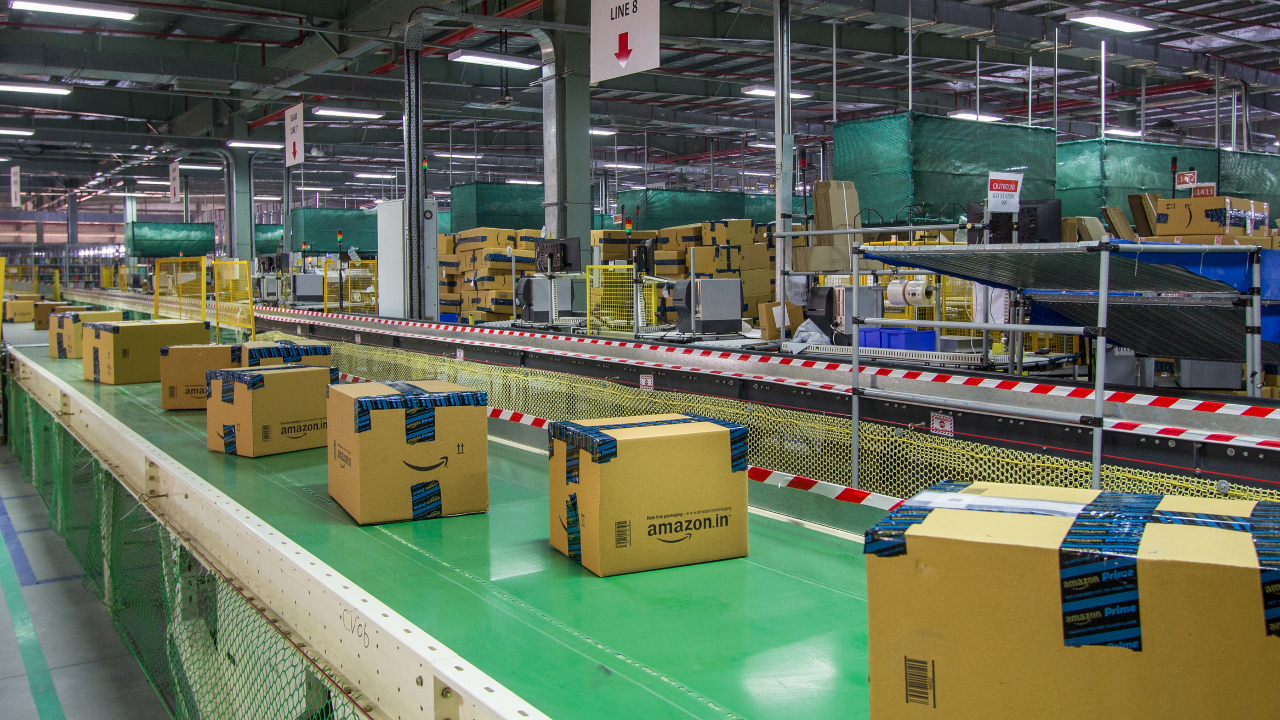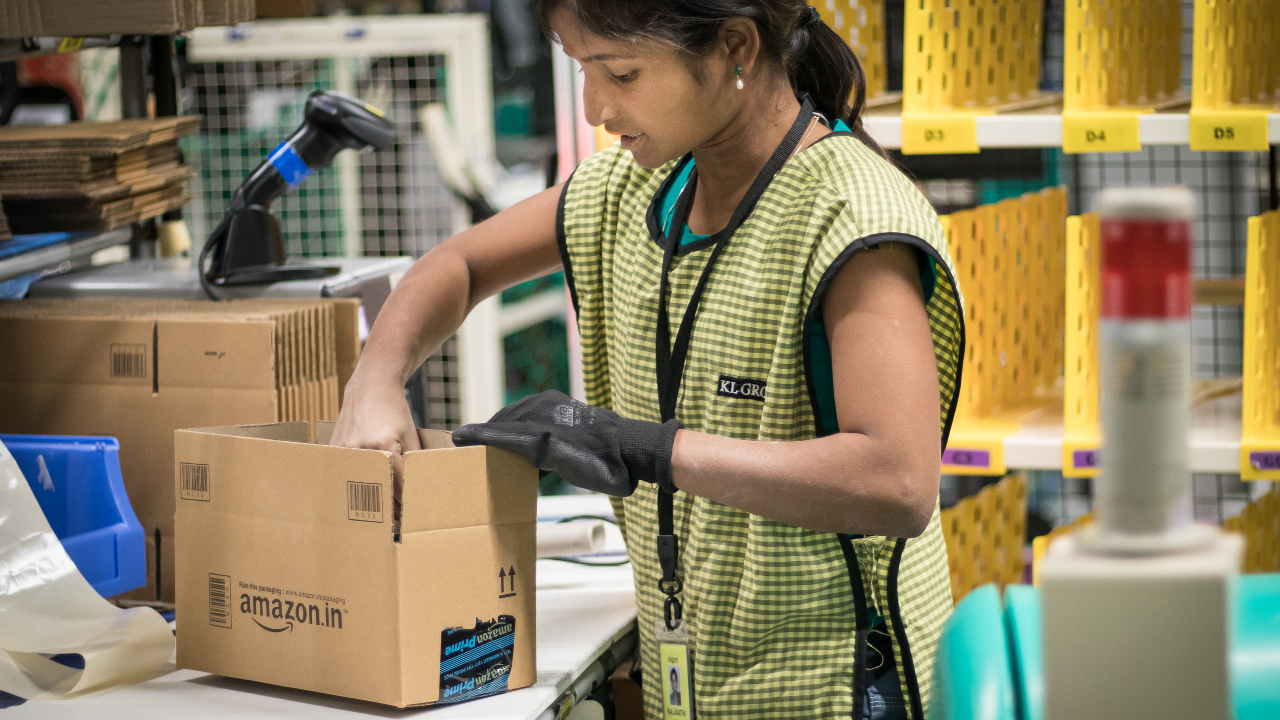Enterprise
Why is Amazon starting a $250 million venture fund in India?
Aims to bring 1 million offline stores online by 2025

Amazon has announced a US$ 250 million venture fund called Amazon Smbhav Venture Fund that’ll invest in small and medium-sized businesses. The goal is to boost India’s export by using technology and the marketplace’s reach.
Amazon Smbhav will be focusing on the digitization of small businesses, agri-tech innovations to raise farmer productivity, and health tech for quality universal healthcare. The fund was announced at Amazon India’s annual Smbhav Summit.
It intends to tap offline sellers and professionals via the fund and on onboarding a million shops by 2025. Another initiative is “Spotlight NorthEast,” which will bring 50,000 artisans, weavers, and small businesses online from India’s North-Eastern states. The region is known for its local produce like honey, tea, and spices.
The announcement came at a fireside chat at the summit between Andy Jassy, incoming CEO of Amazon and Amit Agarwal, Global Senior VP and Country Head, Amazon India. They also revealed the first bet Amazon was making through the new fund — invoice discounting platform M1xchange, in which it has led a $10 million investment.
Amazon said it created close to 300,000 jobs since January 2020 and one million in total. It also boasted of having almost 70,000 sellers, exporting Indian goods to other markets totaling US$ 3 billion in sales.
The timing of Amazon India’s announcement is key because the e-commerce companies have been barred from delivering in the state of Maharashtra amid a Coronavirus-led curfew. While the restrictions are regional, businesses are unable to get necessary and basic supplies. In a work-from-home world, getting an emergency mice/keyboard or mattress should be easy via digitization, but there are antitrust concerns.
Due to a lockdown, offline sellers cannot operate and thus, don’t want online businesses to eat their share. The Narendra Modi-led government has historically sided with the offline traders since they constitute a majority of India’s market. The offline market is still the king, and the gap between the two is very substantial.
If online players operate exclusively for too long, they’ll start gobbling up market share gradually, killing the smaller businesses. While the aim is to maintain a level-playing field, the current rules aren’t helping anybody at the end of the day. The region also fails to collect indirect taxes over the possible transactions, leading to a cash crunch while the pandemic rages.
The FDI (Foreign Direct Investment) rules for the retail market were changed in 2019, meaning Amazon India could no longer directly sell its products. It had to act like a marketplace to maintain healthy competition since 100 percent FDI is allowed in e-commerce as a tech platform, but not as a retailer.
Thanks to the fund, Amazon can show its commitment to India and its initiatives to encourage online trade. India’s new farm laws also make it easier for private companies to invest in agriculture or partner with farmers for contracts.
Amazon had announced an investment of US$1 billion in January 2020 and its purpose was also the same — digitizing India’s small and medium businesses. Founder Jeff Bezos had said back then, “We are doing this now because it is working. And when something works you should double down on it.”
For now, the concerns of a monopoly are diminished because Amazon is going up against India’s homegrown Flipkart, which Walmart now backs. Reliance is also eyeing this segment and has already kicked off a hyperlocal service called JioMart. Lastly, many other retailers like Dmart, Tata CliQ + Bigbasket, and Grofers are available.

For the longest time, Google kept Pixel and Android behind two different teams. While the Pixel team dealt with devices made by and for the brand, the Android team ships a product meant for brands outside of the company’s purview. However, the days of separation are at an end. Google is officially merging its Pixel and Android teams together.
In a shocking announcement, the company has confirmed that the teams handling hardware and software will fall under a single team headed by Rick Osterloh. Prior to the merge, Osterloh was the senior vice president of devices and service, which was Google’s hardware branch. He will now oversee both hardware and software.
Because of the new leadership change, Hiroshi Lockheimer, former head of Android, will now move on to other projects within Alphabet. Of note, the change is not harsh for Lockheimer. He and Osterloh had been contemplating on the merge for a while.
Now, why the change? As is the case with everything today, it’s all because of AI. Speaking to The Verge, Osterloh explains that the merge will help with “full-stack innovation.” With how technology is these days, it’s now impossible to develop AI without having a close eye on hardware, such as in Google’s AI developments for the Pixel camera. Merging the teams will help streamline development, especially when hardware is involved.
Despite the change, outside brands, like Qualcomm’s Cristiano Amon, remains confident of Android’s capabilities outside of Google. Just expect more AI coming out in the near future.

The ongoing trade war between the United States and China is putting a lot of companies out of business in one country. While all eyes are currently on America’s crusade against TikTok, China has launched a salvo of its own. The country has started banning AMD and Intel, starting with government devices.
Recently, as reported by the Financial Times, China has introduced a new rule that bans American chipsets and servers from government agencies. The new ban includes AMD, Intel, and Microsoft Windows.
In lieu of the now-banned brands, Chinese government agencies must use approved brands from a list of 18 Chinese manufacturers. Unsurprisingly, the list includes Huawei, another brand involved in the ongoing trade war. (Huawei is still banned on American soil.)
As with bans from America, China’s latest rules stem from a desire to implement national security. Both countries allege that using brands from the opposing side will open a potential avenue for transferring classified information.
Currently, the ban against the American chipsets are only affecting government devices. However, if it follows the same trajectory as Huawei and TikTok in the United States, a government-only ban might soon lead to an all-out ban on consumer devices. As TikTok is currently hanging in the balance, it’s unlikely that the trade wars will cool down anytime soon.

So far, Apple’s greatest enemy has been the European Union. Months and months of claiming that the company engages in anti-competitive practices, the region has successfully caused Apple to drastically change a lot of things about the iPhone including the Lightning cable. Now, a new challenger wants Apple to answer for its supposed grip on the industry: the United States government.
Today, the Department of Justice is officially suing Apple for supposedly monopolizing the smartphone industry and stifling competition. The lawsuit alleges that Apple’s lineup of products prevent users from trying out other brands. For example, Apple limits how well a third-party smartwatch works on an iPhone, pushing users to go for an Apple Watch instead.
The lawsuit also includes an important pain point in Apple’s fight in Europe. It says that the company makes it difficult for iPhone users to communicate with Android users (and vice versa). Late last year, the company already committed to supporting RCS as a messaging standard, finally easing communication between the two systems. Their adoption has yet to arrive, though.
Though not as stringent as Europe, the American government is no slouch when it comes to questioning its own companies for pursuing anti-competitive practices. In the past, it went through Google and Spotify to protect the interests of its citizens. The lawsuit against Apple is no different, gathering signatures from sixteen states.
For Apple’s part, the company aims to get the case dismissed, alleging the lawsuit’s unfair scope of just the American people when it targets the entire world.
SEE ALSO: Apple opens first Developer Center in Southeast Asia
-

 Events2 weeks ago
Events2 weeks agoStellar Blade: PlayStation taps cosplayers to play Eve for game’s launch
-

 Features1 week ago
Features1 week agoFortify your home office or business setup with these devices
-

 Accessories2 weeks ago
Accessories2 weeks agoLogitech unveils G Pro X 60 gaming keyboard: Price, details
-

 Reviews1 week ago
Reviews1 week agorealme 12+ 5G review: One month later
-

 Deals2 weeks ago
Deals2 weeks agoTCL P635 TV: Big savings for TCL’s anniversary
-

 Gaming1 week ago
Gaming1 week agoNew PUMA collection lets you wear PlayStation’s iconic symbols
-

 Accessories1 week ago
Accessories1 week agoMarshall Major V: Reasons Why I Love It
-

 Gaming1 week ago
Gaming1 week agoMore PlayStation 5 Pro specs have been leaked



























